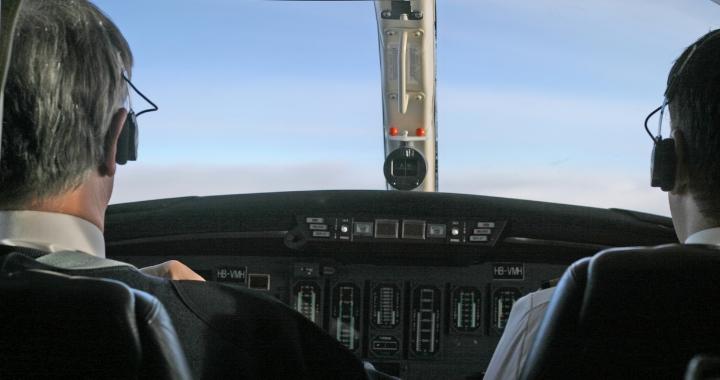In the dynamic world of aviation, modern airplanes represent marvels of engineering and sophistication. Each aircraft model demands specific skills and expertise to master its complexities. As an Airline Transport Pilot, certification is undoubtedly an impressive achievement, but it may not suffice when it comes to operating certain aircraft.
Pilots must undertake additional training and pass tests to earn specific ratings, allowing them to legally fly particular types of aircraft. Today, we’re dedicating this post to unraveling the intricacies of when a Type Rating is required in aviation, shedding light on this essential aspect of a pilot’s journey.

When is a Type A Rating Required?
Type A Ratings are regulatory requirements that apply to most modern aircraft, including popular models like the Airbus A320 and others. Each aircraft presents unique systems, handling characteristics, and complexities, making it essential for pilots to undergo specific training tailored to the aircraft they intend to operate.
Throughout this post, we will explore the significance of Type A Ratings in aviation and when they become mandatory for pilots. We will dive into the types of aircraft that require specific ratings and the importance of these certifications for maintaining safety standards and ensuring competent piloting.
Aspiring pilots and aviation enthusiasts can expect to gain valuable insights into the process of obtaining a Type A Rating and the training involved. We will discuss the comprehensive flight training programs, the role of full-motion simulators in preparing pilots for various scenarios, and the practical test that determines a pilot’s proficiency to act as the pilot in command of a specific aircraft.
What Is A Type Rating In Aviation?
A Type Rating in aviation is a specialized certification that enables pilots to operate specific types of aircraft. As modern airplanes become more advanced and complex, pilots need to receive tailored training for each aircraft model they wish to fly.
Type A Ratings, depending on the aircraft, are specific certifications required for pilots to act as the pilot in command of particular types of aircraft. They are mandatory for operating certain powered aircraft, including large commercial jets like the Airbus A320. The United States Federal Aviation Administration (FAA) regulates the Type A Rating process to ensure the safety and competency of pilots operating these complex aircraft.
To obtain a Type A Rating, pilots must undergo extensive training programs that include both ground school and flight simulator sessions. These type rating courses are designed to provide comprehensive knowledge and practical skills needed to handle the specific type of aircraft safely and proficiently.
Type Ratings differ from Class Ratings, which are broader certifications that cover groups of aircraft with similar characteristics. Class Ratings are usually applicable to general aviation aircraft, while Type Ratings are specifically for larger and more complex aircraft.

Aircraft Type Rating Requirements
Type Ratings certifications are specific to each aircraft model, ensuring that pilots are well-prepared to handle the complexities of different flying machines. Let’s explore the Type Rating requirements for some popular aircraft:
1. Airbus A320:
- Minimum flight experience: Typically requires a valid Airline Transport Pilot (ATP) certificate.
- Ground School: Completion of Airbus A320-specific ground training, covering systems, procedures, and limitations.
- Simulator Training: Extensive simulator sessions focusing on normal and emergency operations.
- Practical Test: Successful completion of a type rating practical test.
2. Boeing 737:
- Minimum flight experience: Often requires an ATP certificate with a minimum number of flight hours.
- Ground School: Completion of Boeing 737-specific ground training, including aircraft systems and regulations.
- Simulator Training: Rigorous training in a full-motion simulator, covering normal and abnormal procedures.
- Practical Test: Passage of a comprehensive type rating practical test.
3. Embraer E-Jets:
- Minimum flight experience: Requirements usually include an ATP certificate with specific flight hours.
- Ground School: Completion of Embraer E-Jets ground training covering aircraft systems and operational procedures.
- Simulator Training: Extensive simulator sessions focusing on takeoffs, landings, and various emergency scenarios.
- Practical Test: Successful completion of a type rating practical test.
See our selection of Embraer-compatible Jetbeds HERE.
4. Cessna Citation CJ3:
- Minimum flight experience: Typically requires a Commercial Pilot certificate with specified flight hours.
- Ground School: Completion of Cessna Citation CJ3 specific ground training, encompassing systems and performance.
- Simulator Training: In-depth simulator sessions focusing on various flight phases and emergency procedures.
- Practical Test: Passage of a comprehensive type rating practical test.
See our selection of Cessna-compatible Jetbeds HERE.
5. Gulfstream G650:
- Minimum flight experience: Often necessitates an ATP certificate with substantial flight experience.
- Ground School: Completion of Gulfstream G650-specific ground training, covering systems and regulations.
- Simulator Training: Extensive simulator sessions addressing advanced flight maneuvers and system malfunctions.
- Practical Test: Successful completion of a type rating practical test.
See our selection of Gulfstream-compatible Jetbeds HERE.
NOTE: Not all aircraft require a type rating; it is specific to certain complex and high-performance aircraft. The FAA determines the type of aircraft requiring a type rating based on factors like aircraft size, weight, complexity, and handling characteristics. Aspiring pilots must carefully review the qualifications and training programs offered by approved aviation training centers to fulfill the Type Rating requirements for their desired aircraft.

How To Get A Type Rating
1. Meet prerequisites
Before pursuing a Type Rating, pilots must meet certain prerequisites. Typically, these include holding a valid pilot certificate (such as Private Pilot, Commercial Pilot, or Airline Transport Pilot) and possessing a minimum number of flight hours. The specific requirements may vary depending on the type of aircraft and the aviation authority’s regulations.
To fulfill the prerequisites, aspiring pilots should focus on gaining flight experience and logging the necessary flight hours. Working with experienced flight instructors and engaging in various flying opportunities can accelerate the process.
2. Choose the type of aircraft:
Selecting the type of aircraft for the Type Rating is a crucial decision. Consider factors such as career goals, job opportunities, and personal interest. Whether it’s a commercial airliner, business jet, or regional aircraft, each type of aircraft offers unique challenges and opportunities.
Research various aircraft types, job markets, and industry trends to make an informed decision. Networking with experienced pilots and industry professionals can provide valuable insights.
3. Enroll in a Type Rating Course:
Once the aircraft type is chosen, pilots should enroll in a reputable Type Rating course offered by approved training organizations. These courses consist of ground school training and simulator sessions, providing comprehensive knowledge and hands-on experience specific to the chosen aircraft.
Research different training providers, comparing course duration, syllabus, and instructor credentials. Ensure the training center is certified by the aviation authority to offer Type Ratings for the selected aircraft.
4. Ground School Training:
During ground school training, pilots will learn about the aircraft’s systems, procedures, limitations, and performance characteristics. It is essential to stay focused and engage actively during these sessions to grasp the complexities of the aircraft.
Prepare in advance by studying aircraft manuals, online resources, and training materials to make the most of the ground school sessions. Seek clarification from instructors on any challenging concepts.
5. Simulator Training:
The simulator sessions are a critical part of Type Rating training, allowing pilots to practice various flight scenarios, including normal operations and emergency procedures. Make the most of the simulator training by staying attentive, maintaining situational awareness, and actively participating in exercises.
Practice regularly in a flight simulator if possible, even before starting the Type Rating course. Familiarity with the simulator environment can boost confidence and facilitate better learning during the actual training.
6. Practical Test:
After completing the training, pilots must pass a practical test administered by an authorized examiner. The test evaluates a pilot’s ability to operate the aircraft safely and proficiently, handling various flight scenarios and emergencies.
Prepare thoroughly for the practical test by reviewing all training materials, conducting mock exams, and seeking feedback from instructors. Practice both normal and abnormal procedures to build confidence and competence.
Type A Rating is a crucial certification in aviation that allows pilots to fly specific aircraft models.
If your dream is to fly large commercial jets like the Airbus A320 or other specific types of aircraft, earning a Type A Rating is a crucial step in your pilot certification journey. The extensive flight training and simulator-based instruction will equip you with the necessary skills and confidence to act as the pilot in command, ensuring a safe and successful flying career. Keep in mind that while many pilots fly a plane, it’s the Type A Rating that sets them apart, allowing them to soar to new heights in the aviation world.
For more answers to questions related to your private jet ownership, consult our blog. And, if you’re looking for an easy and convenient tool that will help you and your crew avoid flight fatigue, explore our fleet of JetBeds to find the one that best fits your aircraft.

